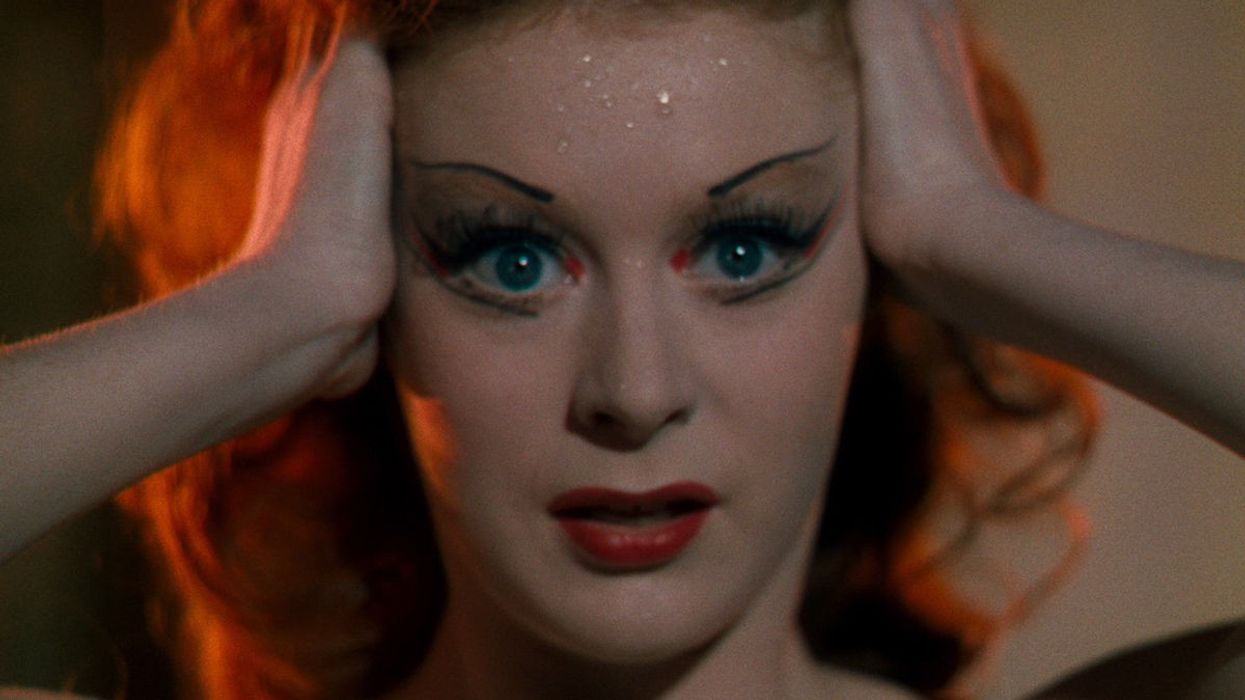Why is 'The Red Shoes' One of the Most Beautiful Films of All Time?
What's the most striking image from a film you've ever seen?

I saw The Red Shoes at the Ritz in the Bourse (Philadelphia) when I was in high school. I heard it was Martin Scorsese's favorite movie, and my grandmother had cut out an article on it from The Inquirer to tell me about it.
Other than the details surrounding the visit to the city, I also remember that dance scene. I remember watching a movie that didn't look like it was made in 1948. I remember feeling like I was being enveloped in the anxiety and wonder of performance art.
And I remember those shoes.
As Criterion puts it, "The Red Shoes, the singular fantasia from Michael Powell and Emeric Pressburger, is cinema’s quintessential backstage drama, as well as one of the most glorious Technicolor feasts ever concocted for the screen."
Check out this video essay The Royal Ocean Film Society that breaks down the film's stunning imagery and then let's talk after the jump.
Why is The Red Shoes One of the Most Beautiful Films of All Time?
The Red Shoes is a movie about artistic expression and obsession. It is about passion and that passion transfers into every frame. Directed by Michael Powell and Emeric Pressburger, the duo wanted to do something different than all the other dance films of the day. The story is an adaptation of a Hans Christian Andersen fairy tale into contemporary dance.
Instead of focusing on the real, the movie becomes surreal. It's about emotions, and what's reflected on the screen is what's going on inside these characters. This attempt to take us out of the boring song and dance numbers had to have a distinct visual representation.
For that, we saw a 17-minute ballet scene at the center of the story that completely destroys the confines of a stage and travels all over a world built from imagination.
Even more so than that avant-garde idea, the one thing that sets this movie apart from imitators is the explosions of color. We don't just stop at the redness of the shoes, but we burst into technicolor dreams, juxtaposed against a black and white afterlife.
This impressionistic look at cinema was the idea of the cinematographer, Jack Cardiff, and he used the three-strip process to get it.
The Three-Strip Process
What is the three-strip process? Well, according to Eastman House, "Technicolor cameras used prisms to separate light into a color spectrum. With two strips, they were separated into red and green, then reunited into one joined projection strip after being treated with a dye-transfer process. Beginning in the late '20s, Technicolor technicians worked to create a three-strip process, making use of red, green and blue, a spectrum through which a more glorious color (as in The Wizard of Oz) could be achieved."
And that's what's on display ion this movie.

The Color Palette
When you watch the movie, you'll see the creativity of cinematographer Jack Cardiff and Production Designer Hein Heckroth on display in every frame. The movie begins with a dull brown and blue, but as our lead is cast in the ballet, more and more color comes into the movie. By the time we're in act two, we're in a full-fledged colorful world.
What does the red mean?
There's a lot to say in terms of color theory, but for this movie, red is the color of the love of dance, the sex associated with turning over into something you love, as opposed to the virginal white worn in the first act. I also think it's the color of entering a magical world...almost Oz-like in a way.
The Red Shoes Tech Specs
- Color: Color (as Colour by) (Technicolor)
- Aspect Ratio: 1.37 : 1
- Camera: Technicolor Three-Strip Camera (uncredited)
- Laboratory: Technicolor, UK (color by) (as Technicolor)
- Film Length: 3,680 m (UK)
- Negative Format: 35 mm
- Cinematographic Process: Spherical
- Printed Film Format: 35 mm
Summing up The Red Shoes Visual Landscape
Technicolor was the most widely used color process in Hollywood from 1922 to 1952. But in the early '50s, Eastman Kodak developed Eastmancolor, which was a less costly one-strip color process that could be used in newly standard cameras. It became the norm, helping to push Technicolor out of favor.
Still, we are left with some of the most vibrant technicolor films to revisit, The Red Shoes being chief among them.
Robert Gitt, a film restorer, worked on every frame of the movie, 192,960 in the print, 578,880 in the tripartite negative, and made it look as good as it does today.
Thanks to restorations like the one UCLA did on the film, its beauty will be able to impact future generations.
Let us know what you think in the comments!
Source: The Royal Ocean Film Society

 Richard Gere and Uma Thurman in 'Oh, Canada' via Kino Lorber
Richard Gere and Uma Thurman in 'Oh, Canada' via Kino Lorber  Uma Thurman in 'Oh, Canada'via Kino Lorber
Uma Thurman in 'Oh, Canada'via Kino Lorber 









